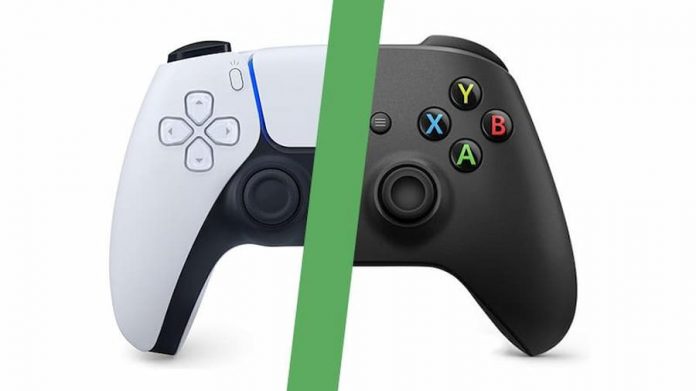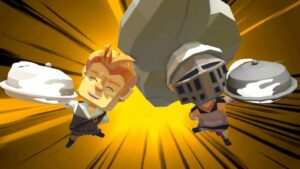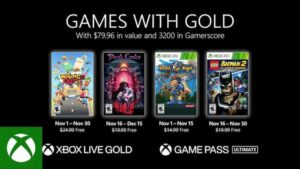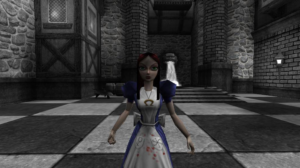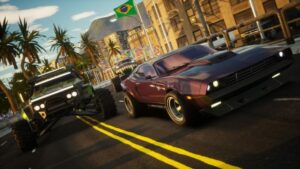
Designing a good controller is all about genetics.
The best controllers will look at what’s worked in the past and build on it. The worst will try desperately to reinvent the wheel. That said, here are seven of the very best – and three of the very worst – controllers ever made.
We’ll just be talking about first party controllers here, so no U-Force or Wu-Tang Clan PlayStation controller in sight. Maybe another time, yeah?
Advertisement
The Best Controllers Ever Made…
7. Sega Mega Drive/Genesis

Kicking off our list is the original Mega Drive controller, released with the console in 1990 in Europe (and in 1989 in North America, where it’s of course known as the SEGA Genesis).
It’s a fairly chunky beast, designed to be held on to and never let go of. But if you happen to have shovel hands it’s also remarkably comfortable. The A, B, C face buttons aren’t too bad either, being responsive if a little gluey. But couple them with a decent d-pad that accentuates diagonals and you have a solid controller for the 16-bit era. Having the word ‘TRIGGER’ around the face buttons is also oddly adorable.
Only having three face buttons might seem a bit paltry these days, but SEGA had always marketed the Mega Drive as bringing arcade titles right into your home. As a result, the controller is a deliberate attempt to mimic the JAMMA arcade standard of three buttons. It’s not just a controller, but a statement of intent.
Of course, if you must perform E. Honda’s 100 Hand Slap in Street Fighter II: Championship Edition without having to change the controller configuration first, Sega did release a redesigned six-button controller for the console in 1993.
If you have a Switch and have bought in to the Nintendo Switch Online Expansion Pack, you can actually pick up the three-button model for use with the Mega Drive portion of the set for £39.99 direct from Nintendo’s online store.
6. NES

Released along with the Nintendo Entertainment System in 1985, this is the grand-daddy of all video game controllers.
Based on the original Famicom design from 1983, the boxy, oblong re-design for the NES controller eschews ergonomic comfort in favour of function and practicality. While its squared corners can make it a touch uncomfortable with prolonged use, and we lost some Famicom features during the re-design process, this controller largely helped salvage an entire industry following the video game crash of 1983.
Although the A and B, Start and Select have become staples in their own right, it’s the d-pad where this one really shines. Designed in-house by Gunpei Yokoi for Nintendo’s earlier Game & Watch series, the d-pad became so ubiquitous in video game controllers that even today, they’re still designed to include one. And it all started here.
The NES controller has also become something of a symbol for Nintendo, having been featured on mugs, t-shirts, and coasters over the years. There was even a special edition Game Boy Advance featuring a design and colour scheme inspired by the controller.
It’s distinctive and instantly recognisable, and for our money NES games don’t really feel the same way when played with anything other than an NES controller. An absolute classic.
5. GameCube

If you didn’t know better, you’d be forgiven for thinking that the official Nintendo GameCube controller wasn’t an official controller at all.
Released along with the console in 2001, a large A button, smaller B button and secondary X and Y buttons are all suggestive of the stranger design choices usually reserved for third parties who don’t really know what they’re doing, but really want to make their stamp on the game controller world.
It’s not without faults in all honesty. With the Z button now being moved to the right shoulder we lose the trigger mechanic present in the Nintendo 64. The d-pad, too, has taken a bit of a battering being absolutely tiny here and quite poor, especially for Nintendo’s previous output.
That said, there is far more to love than hate about the GameCube controller. The button placement is remarkably intuitive, as it turns out, even the Z button. The fairly flimsy plastic thumb stick of the Nintendo 64 controller has been replaced by something far more solid this time around, and the four C-buttons have now become one whole stick placing the controller in the same dual-stick ranks as the DualShock or Xbox controllers.
The L and R triggers are particularly special here too, having both analogue and digital functionality. They do a good job of emulating a throttle, which makes this controller particularly enticing for flight sim games such as Star Wars Rogue Squadron II: Rogue Leader.
However, it’s Super Smash Bros. Melee that garnered this controller its largest fanbase. So much so that many Smash Bros. fans still prefer to use this controller (and re-releases of it) for the franchise.
Looks, apparently, can be deceiving.
4. Xbox One / Series X

Perhaps a bit of a cheat, but we’re bundling these two together. The Xbox One and Xbox Series X controllers just aren’t wildly different enough to include separately.
That’s largely a compliment, as Microsoft clearly knew it had perfected the Xbox series design since the original Xbox ‘Duke’ controller way back in 2001. While the PlayStation DualShock controller featured two thumb sticks side-by-side, the Xbox controller swaps the left thumb stick and d-pad around, meaning the left thumb stick is now directly opposite the face buttons. It’s a clear statement, if anything, that full 3D movement is where we’re at now and the d-pad is nothing but secondary.
The brightly coloured A, B, X and Y buttons of the Xbox 360 controller gave off a slight toy aesthetic, but these were changed on Xbox One so only the letters themselves were coloured. Extra controllers muted this further by supplying a small series of coloured dots as indication of the buttons’ former identification. It’s certainly a more grown-up look for the Xbox franchise.
It’s unfortunate that Microsoft struggled so much with the d-pad; the one on the Xbox One controller is, frankly, awful. Thankfully, the Series X release improved it, but not by a long margin. Both controllers feel fantastic to hold, being weighted perfectly and having a form factor that sort-of slots into your hands so you don’t drop it.
A revised Xbox One controller added Bluetooth compatibility to the unit which became standard from that point going forward, meaning most PC players can use it wirelessly out of the box. Solid and versatile, it’s an icon for the gaming industry as a whole.
3. PlayStation DualShock 1/2/3

We bundled the Xbox controllers together, so it’s really only fair we do the same for the PlayStation DualShock.
The original DualShock was released in 1997, a whole three years after the release of the original PlayStation. It’s the only controller on this list not available with its respective console’s launch.
Sony actually owes quite a lot to Nintendo for the original design of the PlayStation controller, perhaps due to their preliminary work on the Nintendo PlayStation. The four face buttons that feature the symbols of cross, circle, triangle and square mimic the layout of the A, B, X, and Y buttons of the SNES controller by mirroring the d-pad. The L and R buttons are present too, though now doubled to include L1/L2 and R1/R2.
The DualShock took this inspiration further by doubling down on the innovations of the Nintendo 64 controller. There are now two thumb sticks that are much improved over the N64 one, featuring a strong rubber grip and a stockier form factor that makes them feel tighter and of a higher build quality. The single-motor Rumble Pak of the Nintendo 64 wasn’t enough for Sony, so it threw in two motors for the DualShock (hence its name) to give a variable amount of haptic feedback.
Sony obviously liked it very much as it kept the controller for the PlayStation 2, releasing the DualShock 2 along with the console in 2000. Despite some internal differences and smoother thumb sticks, the design is largely the same.
Following a PlayStation 3 preview at E3 2006 that featured a bizarre boomerang controller, and a legal battle that lead to the SixAxis taking the launch spot, Sony eventually released the DualShock 3 in 2008. While it adds some modern design features such as larger triggers and a ‘home’ button, it’s still remarkably similar to the earlier controllers. Phew, that’s a legacy of over 15 years.
2. Sega Saturn (Second model)

When the original SEGA Saturn was released in Japan in 1994, it came bundled with this beautiful beast of a controller. In the United States and Europe, the Saturn actually launched with a much bulkier and uglier controller with a horrible d-pad. We had to wait about a year for the better version to get released.
But it was worth it, and this is one of our favourites. It’s largely based on a re-design of the Mega Drive’s six-button controller, which was in itself a re-design of that console’s three-button controller. It’s a case of SEGA finding perfection over time; this particular controller has peak ergonomics, meaning it’s one of the most comfortable to hold.
The six face buttons feel fantastic, with the A, B, C buttons having a concave form so your thumb rests nicely in place. The smaller convex X, Y and Z buttons sitting above are also comfortable to use, and the L and R shoulder buttons are considerably more tactile than the original, chunky controller released in the West.
It just feels right, and if you’re into fighting games in particular this really is a must-own.
It’s a real shame the SEGA Saturn didn’t have much of a lifespan, as this controller really does feel smooth and easy to use. Thankfully, you can pick up a range of wireless and USB variants for your console or PC. We’d recommend Retro-Bit’s offering, if you’re interested.
1. PlayStation 5 DualSense

This is it. The best controller currently available.
When the PlayStation 5 was first announced, there was some apprehension that the DualSense was largely a gimmick. It wasn’t until release that we really got a sense (no pun intended) of why Sony is so proud of it.
The design of the DualSense borrows heavily from the DualShock series that preceded it, featuring the same basic button layout and touch pad from the DualShock 4. There is, however, a number of new features that really make this controller stand out.
The first is the level of rumble available. It’s by the same company who developed the HD Rumble for the Nintendo Switch, offering different strengths and speeds of haptic feedback in response to what’s happening on screen. The adaptive triggers are also an absolute blessing, with varying degrees of pull and response when needed. There’s a built-in microphone, too, enabling further interaction in some games.
Whether you’re thwip-ping up goons in Spider-Man Remastered, running away from a dragon in Demon’s Souls or simply having a blast in Astro’s Playroom, it all makes the controller feel ‘next-gen’ and extends the entire PlayStation 5 experience directly into your hands.
The console is still difficult to find, unfortunately, but if you do manage to snag one in time for the holiday season, you’ll never want to put the controller down.
…And the Worst Controllers Ever Made
3. Atari Jaguar

Say, do you like buttons? Then, boy, do we have the controller for you.
Released with the Atari Jaguar in 1993, much has been said about this controller. Yet, like the Mega Drive controller before it, it isn’t wildly uncomfortable to hold if you have sufficient hand real estate.
The basic design of the controller features three A, B, C face buttons and these aren’t terrible either, featuring a nice concave groove to rest your thumb in to, along with L and R shoulder buttons. It’s the bit at the bottom that the controller is most known for, however.
It’s a 12-button layout of rubberised keys that feel squishy and not much fun to use. The idea here was that games shipped with a card overlay to place over these 12 buttons, meaning in the likes of DOOM you had quick access to all the different weapons at your disposal.
The theory is sound, but in practice players either have to stretch a thumb down to use the pad or release one hand altogether. And like it’s been said countless times before, it does look like a lot like the base of an old-fashioned telephone.
And if you really must have more buttons, Atari later released the “Pro” controller in 1995 which featured extra X, Y and Z face buttons. That’s a ridiculous 22 buttons on one controller.
2. Amiga CD32

Released in 1993, the Amiga CD32 is notable for two main reasons. Firstly, it has the distinction of being the very first 32-bit CD-ROM-based home games console released in Europe. Secondly, its controller features a litany of poor design choices.
There’s an implicit design principle inherent to all good controllers. Usually, they’ll jut downwards to give your palms some place to rest. With the exception of the NES controller, all the good ones on this list follow this design. But not for Amiga, where up is the new down and comfort is frowned upon.
As well as being designed upside down, it bows outwards unintuitively for some reason. And who needs a d-pad when you have something that suggests similar functionality but in no way guarantees it? Colourful face buttons imitate those on the Super Nintendo but aren’t even labelled outside of media functionality so it’s not exactly accessible either.
Its only saving grace was that it used a common 9-pin D-Sub socket, meaning any number of Amiga, Atari or even SEGA controllers could be used on the CD32 in place of this stock monstrosity. It’s entirely possible that’s the entire reason why Amiga didn’t bother putting much thought into the controller, but we wouldn’t be as cynical as to suggest anything like that.
It also looks a bit like a telephone handset, so you can always turn it upside down and pair it with the Atari Jaguar controller to complete the set.
1. View-Master Interactive Vision

If you’re too young to really remember View-Master, it largely became famous for a stereoscopic toy slide viewer which became a staple of 70s and 80s childhoods. What the company were less famous for was its games console.
That was the View-Master Interactive Vision, an “educational” VHS-based home console released in 1988. Or was it 1989? The information is a little murky. What we do know that is that it only had seven games released for it, which is seven too many.
Looking like it was designed by someone who has never played a video game before and was asked about the theoretical lovechild of the board game Mouse Trap and a box of mixed LEGO, the console itself wasn’t much better. Picasso would be proud.
Legend has it that it can steal a person’s soul. Thankfully, as it was discontinued in 1990, we should all be safe.
Source: https://www.gamespew.com/2021/12/best-worst-controllers-ever-made/
- &
- 100
- 3d
- 7
- Absolute
- access
- aesthetic
- All
- america
- announced
- around
- Atari
- auto
- Battle
- BEST
- Bit
- bluetooth
- board
- Box
- build
- case
- change
- Circle
- Common
- company
- Console
- controller
- Couple
- Crash
- Design
- despite
- developed
- DID
- digital
- Dragon
- Drop
- DualShock
- e
- e3
- enabling
- Entertainment
- estate
- Europe
- expansion
- experience
- Face
- fair
- Feature
- featured
- Features
- First
- flight
- follow
- form
- Forward
- Franchise
- full
- fun
- function
- game
- game controller
- Games
- Gaming
- Gaming Industry
- Genesis
- Genetics
- good
- here
- hold
- holiday
- Home
- HTML
- HTTPS
- ICON
- idea
- Identification
- industry
- information
- Inspiration
- intent
- interaction
- interactive
- IT
- jaguar
- Japan
- Job
- keys
- large
- launch
- lead
- Legal
- Level
- List
- Long
- love
- Media
- Microsoft
- mirroring
- mixed
- model
- Modern
- money
- New Features
- Nintendo
- Nintendo Switch
- North
- north america
- offering
- official
- online
- Other
- PC
- plastic
- players
- playstation
- playstation 5
- poor
- present
- Preview
- Process
- ps5
- quality
- range
- real estate
- reasons
- response
- REST
- rubber
- rumble
- running
- safe
- saving
- Screen
- secondary
- Sega
- Series
- set
- SIM
- SIX
- SIXAXIS
- Slots
- small
- smaller
- So
- Sony
- Soul
- Spot
- square
- start
- started
- Statement
- States
- stock
- supplying
- Switch
- system
- talking
- The
- Thinking
- third parties
- time
- touch
- toy
- triggers
- United
- United States
- usb
- Video
- vision
- wait
- Watch
- West
- What
- Wheel
- WHO
- Wikipedia
- wireless
- Work
- world
- worth
- X
- xbox
- Xbox One
- Xbox Series X
- year
- years
- Z
